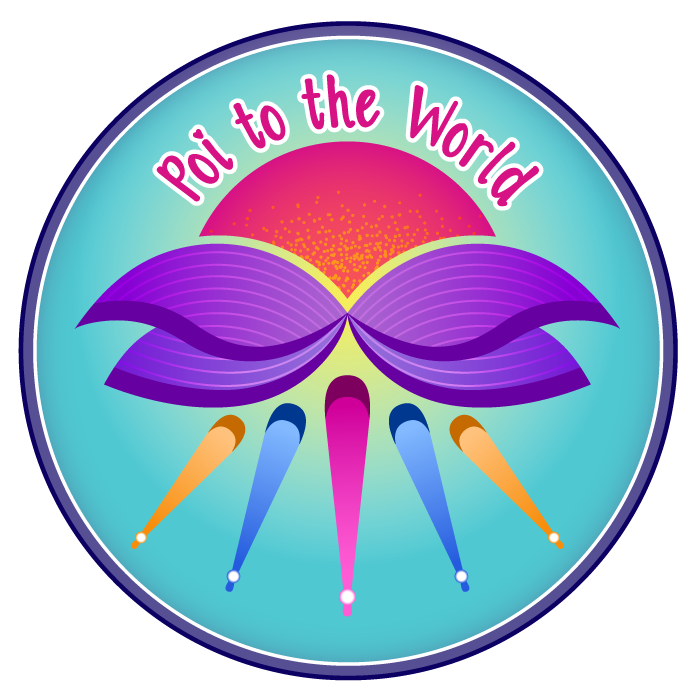
What is Poi?
The word poi refers to both the dance and the props used. It began in New Zealand with the Maori. Poi is traditionally performed by women.
Poi involves swinging weights, usually balls, on a string. They are swung to create shapes, patterns, and rhythm. Poi is artistic and athletic at the same time.
Image By Honet at the English language Wikipedia, CC BY-SA 3.0, https://commons.wikimedia.org/w/index.php?curid=11770492
Poi has traveled the world.
Poi has traveled around the world and been re imagined and reinterpreted by everyone who has practiced it. Its an ever evolving art form. It combines techniques from disciplines like club swinging, glow stringing, and contact juggling.
Traditional Maori poi is performed in large groups with structured choreography..
Modern poi is often performed solo. However, partner poi and group choreography are becoming more and more popular.
There are many kinds of poi used today, LED or glow poi, as well as fire poi are popular options for performers.
Nick Woolsey Spinning Glow poi in a long exposure photo. By Hendrik Kueck from Vancouver, Canada - Flickr, CC BY 2.0, https://commons.wikimedia.org/w/index.php?curid=394518
This video shows Greg Haskins, a poi artist from Massachusetts, USA, demonstrating modern poi. As poi has been traveling around the world the art form has been reinterpreted and remade. This video shows contact poi and fabric poi. Contact poi are made with balls on ropes. They’re for doing moves where the heads of the poi roll or rest on the body. Fabric poi are great for practicing your patterns and swinging shapes.
The power of play.
Play is an essential part of how our brains function. Poi is both play and meditation. Many people describe using poi to help gain control of their thought. Poi allows you to focus on your body and its movement helping you to keep your thoughts in the present moment. Many practitioners describe reaching a “flow state” where the mind quiets and movements are fluent and automatic. Flow state is something described by many athletes.
While I don’t have any studies to site to this effect, I do have much anecdotal evidence from other poi artists that have used poi to help them break addictions or adopt healthier habits. It has even been recommended as a good exercise for seniors.
SpinPoi.com is a great resource for additional information on the link between poi and health.
How Do I Learn poi?
There are tons of amazing tutorials available online. That’s a great place to start. On this website I’ve created a list of free online resources on how to learn poi. Check out the Tutorials page.
Many poi practitioners say that they progressed faster when they had other people to practice with. Poi is a form of “object manipulation” or “flow art”. Cities all over the world often have meetups called Spin jams or Flow jams. Many of these can be found on Facebook groups or pages. They usually take place weekly in a public park. At these meetups you will likely find people who like to practice many different “props”. Props can be an object you dance with or manipulate. Popular props are poi, fans, staff, hula hoops, rope dart, leviwand, and many many others.




